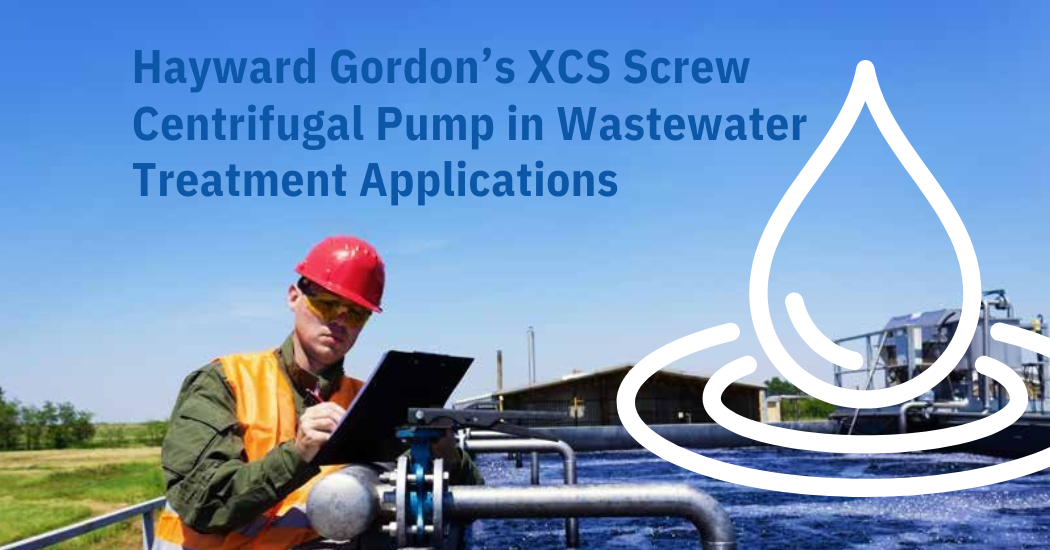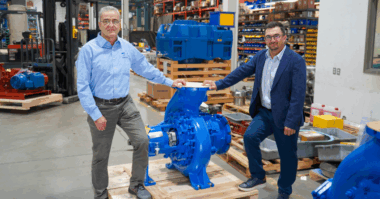Treating wastewater comes with serious challenges for pumps. Rags, hair, and clumps of stringy material accumulate on the impeller edges during the pumping process, causing clogs. Extensive downtime is required to clear these clogs. In addition, the fluids involved in wastewater treatment are often corrosive and cause extensive wear on the pumping system.
Under such circumstances, a non-clogging pump would seem to be the most logical option for wastewater treatment. Unfortunately, traditional non-clog pumps are a problematic solution for ensuring the smooth flow of fluid in such operations. Hayward Gordon’s XCS Screw Centrifugal Pump is a more reliable and cost-effective choice for wastewater plants due to the double function and construction.
Uniquely designed and constructed from wear-resistant materials, the XCS excels at applications involving municipal sludges (including Return Activated Sludge and Waste Activated Sludge), digester mixing, sludge storage tank mixing, influent/raw sewage, and transfer pumps (digesters). The XCS can manage municipal sludge containing up to six percent solids and retains high efficiency even during lowhead RAS and WAS applications. Durable and efficient, the low-shear, centrifugal XCS offers cost savings and peace of mind.
A traditional non-clog centrifugal pump typically features an inlet with two or more vanes exposed to the flow. Wipes and rags wrap around the blunt edges of these vanes, leading to clogs. In addition, outlets in conventional non-clog pumps have rectangular passages with 90-degree corners, another design element that can cause debris to build up.
The front section of the XCS serves as a positive displacement screw, drawing fluid gently into the pump. The XCS pump features a single vane centrifugal impeller. The single vane impeller acts like a chute (solids tend to slide through), while a metal shroud hides the pointed impeller tip so it won’t snag debris. Smooth flow is further ensured by a spiral-shaped passage designed without any sharp corners, allowing rags and wipes to pass. Any solids caught between the impeller and cone are trimmed off by specifically designed cutting grooves and sent back into the flow. Thus, maintenance and downtime caused by clogs are eliminated.
When utilized in corrosive wastewater applications, traditional non-clog pumps made from cast iron must be frequently replaced. The impeller and inlet of the XCS are constructed with Hi-Chrome that’s heat-treated to 450 BHN (Brinell Hardness Number) hardness. In abrasive wastewater environments, the XCS is vastly tougher and longer-lasting than its cast-iron counterparts.
The working life of the XCS is also enhanced through an externally adjustable suction liner (internal clearances can be adjusted easily to compensate for wear and tear). The pumping process of the XCS involves minimal hydraulic loss and less energy consumption compared to other systems, further reducing expenses.
The XCS is the best choice for municipal wastewater treatment applications for longevity, reliability, and long-term cost savings.
To learn more, visit the XCS Screw Centrifugal page: https://haywardgordon.com/products/xcs-screwcentrifugal-pump/




